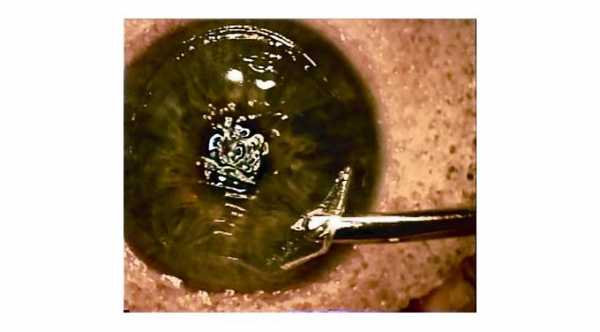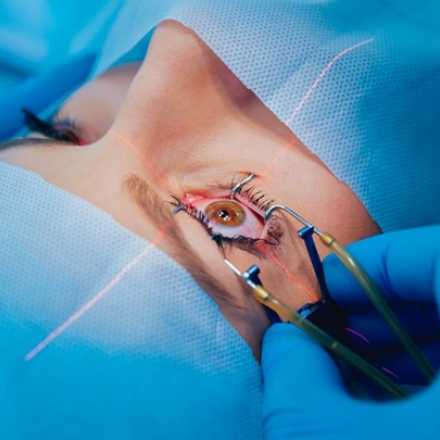
Lasik Complications
Like any other surgery, lasik has complications but the risks of these complications are very low but they still happen. Many studies were done regarding the safety and effectiveness of LASIK and most of the people who underwent lasik were very happy with their vision, without any complains and without any complications and the complications rate was very low.
Almost all of the lasik complications can be treated. The risk of these complications will decrease as the experience of lasik surgeon increases.
You have to know that each patient responds and heals differently after surgery and the risk of lasik complications increases if you have other eye or health conditions, so try to mention all the systematic and ocular diseases that you have to your doctor before the surgery because some diseases may need pre surgical evaluation or treatment while other might interfere with the safety of the lasik so the surgeon might eliminate you from undergo lasik surgery for your safety.
Less than 1% of people who underwent lasik surgery will suffer from serious post lasik complications.
1- Lasik Complications Related to Microkeratome
Creation of thin, irregular corneal flap, and sometimes buttonhole flap which are the formation of holes in corneal flap. Another complication that can occur is creation of small flap that gives insufficient size of corneal stromal bed for laser ablation. These lasik complications can be treated by replacing the flap again and allow it to heal for few months and then undergo another lasik procedures.
Another rare but devastating complication is corneal perforation which occurs in thin cornea or when the microkeratome is not properly assembled.
With the movement of microkeratome over the cornea for flap creation, there maybe friction with formation of corneal epithelium erosion and abrasion. Flap creation using bladeless or femtosecond laser, the incidence of this erosion is reduced.
2- Flap Related Complication
If the corneal flap is not made correctly with mechanical microkeratome, its adherence to the corneal bed will not be good in which it might get wrinkled, folded or dislocated.
Flap dislocation in this case can occur spontaneously or after minor trauma or eye rubbing. Treatment of it should be surgical repositioning of the flap. The incidence of these complications decreases with increased physician experience and with non-microkeratome related procedure such as Intralase Lasik.
Another flap related complication is a complete detachment of the flap from its attachment with the cornea. It occur usually early after the surgery and its treatment is surgically as soon as possible to prevent the flap from dryness.
Its incidence is decreasing with physician experience and with non-microkeratome procedures (femtosecond laser) and also to decrease this incidence the patient should sleep with protective goggles or eye shields in the first few days postoperatively to give time for the flap to heal. Blunt trauma to the eye several year post lasik can also cause flap dislocation but its incidence very low. Read more about Lasik Flap Complications
3- Dry Eyes
This one of the most common lasik complications. Dry Eye symptoms may occur or getting worse if you already have it. In lasik there will be damage to corneal nerves and these nerves help in the secretion of tear films, so the risk of dry eye after lasik is high but most of the time it is transient and can be treated with artificial tears. In rare cases there might be permanent dry eye and in this case another treatments modalities for dry eye can be used. Read more about Dry Eyes
4- Diffuse Lamellar Keratitis
Diffuse lamellar keratitis or it is called Sands of Sahara. It is corneal inflammation that occurs between the flap and the corneal bed. It can range from mild with no or little symptoms which will regress spontaneously to severe form that need intensive treatments. Read more about Diffuse Lamellar Keratitis
5- Corneal Infection
Corneal infection can occur after lasik surgery and can be caused by Staphylococcus aureus and acanthamoeba. The symptoms are red eye, pain, discharge and blurred vision. Treatment is with antibiotics and sometimes with flap lifting and irrigation with sterile fluid and antibiotics.
6- Epithelial Ingrowth
The epithelial cells that cover the cornea might have access under the flap and grow there with formation of hazy tissue that can be treated by lifting the flap and scraping the interface and irrigation with sterile fluid to remove the debris.
7- Corneal Ectasia
This happen when the remaining or residual corneal bed after excimer laser ablation is less than 250 microns. The cornea becomes weak and it will be bulged outwards causing high refractive errors with high astigmatism that can not be treated with soft contact lenses or glasses. It has high risk for rupture or perforation with minor trauma.
Treatment of this condition can be by using hard contact lenses, intrastromal corneal rings, corneal intacs, corneal collagen cross linking but in severe cases, corneal graft is required.
8- Over-Correction or Under-Correction Vision
Patients who are at risk of this complication are those who have high refractive errors. Other possible causes are due to technical problems such as incorrect setting of the software program which guides the laser ablation and also it can be due to incorrect diagnosis and inexperience of the surgeon.
Another possible cause is that the patient will not respond to the surgery as expected The good news in that they can undergo another lasik session to correct the remain error in case of under-correction error and this is called the lasik enhancement but this can not be done until few months have passed since the last session, to give the cornea time to heal appropriately and the refractive error becomes stable, also you should have enough corneal thickness for further laser ablation.
Sometimes it is not possible to do another refractive surgery so you just have to wear glasses or contact lenses and usually the prescription is weaker than that before surgery. For Over-correction the treatment will be with glasses or contact lenses. This complication is uncommon these days because of the advances in lasik surgery.
9- Visual Aberrations
Visual aberrations occur especially in dim light. These aberrations that can occur post LASIK surgery and can affect your vision are:
1- Anisometropia which is the difference in refractive power between the two eyes.
2- Aniseikonia which is the difference in image size between the two eyes.
3- Double vision or ghost vision.
4- Hazy vision.
5- Fluctuating vision during the day and from day to day which is mainly due to dry eye.
6- Increased sensitivity to light, glare, shadows, and seeing halos around lights.
7- Loss of contrast sensitivity or foggy vision.
8- Problems with low-light or night vision.
The risk of these visual aberrations to happen is very low. You will have 20 20 vision but you still have these visual aberration.
10- Subconjunctival Hemorrhage
This is one of common lasik complications. It is a minor or a benign complication. It happens mainly during placement of the suction ring around your eye. This suction ring will cause raise in intraocular pressure which is an important step for flap creation by microkeratome. Read more about Subconjunctival Hemorrhage
11- Your vision post lasik may not permanent
You may notice change in your vision many years after surgery. This change is mild and mainly for reading and in this case you either wear near glasses or you can do another lasik surgery.






